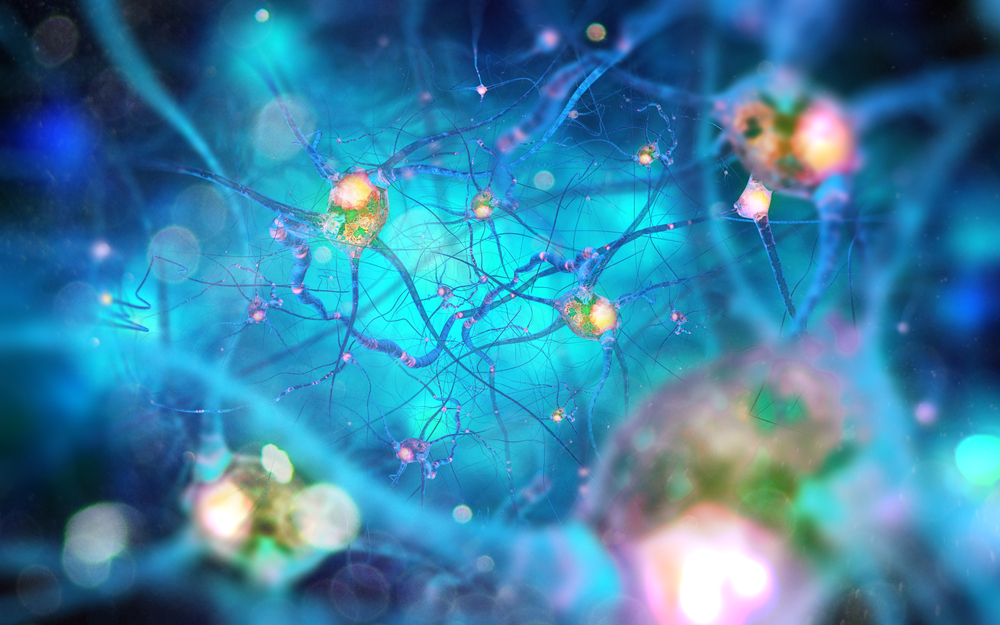Parkinson’s Neurons Form Atypical Networks

Andrii Vodolazhskyi/Shutterstock
Parkinson’s disease brain cells form abnormal networks that might predispose the cells toward damage, according to new research done using cells in laboratory conditions.
“These discoveries open the door to early diagnosis, which would allow us to carry out a premature intervention that would slow down neuronal death, and therefore, would stop the evolution of the disease,” study co-author Antonella Consiglio, PhD, of IDIBELL and the University of Barcelona in Spain, said in a press release.
The findings were published in npj Parkinson’s Disease, in the study, “Parkinson’s disease patient-specific neuronal networks carrying the LRRK2 G2019S mutation unveil early functional alterations that predate neurodegeneration.”
Parkinson’s is caused by the death and dysfunction of neurons (nerve cells) in the brain that make a signaling molecule called dopamine.
While most cases of Parkinson’s are idiopathic — meaning the underlying cause is unknown — about 5% of cases are caused by genetic mutations. For example, mutations in a gene called LRRK2 can cause Parkinson’s.
Parkinson’s caused by LRRK2 mutations is clinically indistinguishable from idiopathic disease, but in both instances, the underlying biology that causes neuronal dysfunction is still largely unknown.
In the new study, an international team of researchers conducted a series of cellular experiments to examine how LRRK2 mutations might affect dopamine-producing neurons (DAn) in the brain.
The researchers used a cell model called induced pluripotent stem cells (iPSCs). They collected easily-accessible cells (e.g., skin cells); then, through a series of biochemical manipulations, those cells were programmed to grow into DAn, which the researchers could then study in culture.
The team used several different iPSC lines, each derived from a different individual. They used cells from people with Parkinson’s caused by LRRK2, and compared them against cells derived from healthy people. As an additional control, the team also assessed Parkinson’s cells that had been genetically edited to “correct” the disease-causing LRRK2 mutation.
In examining the DAn with or without a LRRK2 mutation, the researchers noted that overall neuronal activity was comparable, and there wasn’t any overt signs of neurodegeneration (neuron dysfunction and death) in any of the cell models.
Nonetheless, some important differences were noted.
In control DAn, the cells’ electrical activity tended to be fairly consistent over time. By contrast, in Parkinson’s DAn there were periods of very high electrical activity followed by periods of little or no activity.
Although the overall activity was the same, the researchers think the periods of intense activity that occur in the Parkinson’s neurons “could render them more susceptible to stress.”
In laboratory cultures, just like in the brain, neurons form networks, with one neuron connecting to one or more of its fellows. In healthy cultures, the neurons tended to form small units that were heavily connected to each other, with more mild connections among the units. Parkinson’s neurons, in contrast, were less well-connected as small units, but there was more overall connectivity among neurons as a whole.
“The normal, healthy network is characterized by a high average connectivity and well-defined small communities, while the PD [Parkinson’s disease] network is characterized by a lower average connectivity and large, strongly linked communities that effectually almost shape a unique structure,” the researchers wrote.
Further analyses, including both computer simulations and additional cell experiments, revealed that Parkinson’s DAn tended to have fewer neurites —the projections that neurons use to connect with each other in networks. On average, Parkinson’s DAn had 1.2 neurites per neuron, while healthy neurons had more than four.
“These new data from PD-affected human DAn indicate that early dysfunction may contribute to the initiation of downstream degenerative pathways that ultimately lead to DAn loss in PD,” the researchers concluded.
Notably, the team got relatively consistent results across several different iPSC lines used. Since there is “notorious variability described among iPSC lines,” the researchers wrote, the consistency among different lines indicates that the findings are truly reflective of dysfunction caused by Parkinson’s.
The researchers also said that this study’s results “show the usefulness of sensitive physiological studies of human iPSC-derived DAn for future work aiming to develop new diagnostic tools and therapeutics for PD.”







